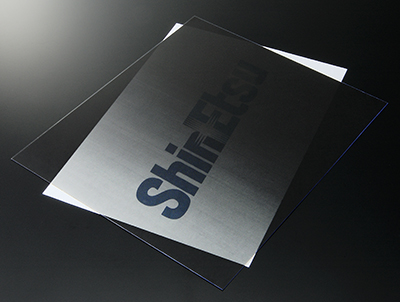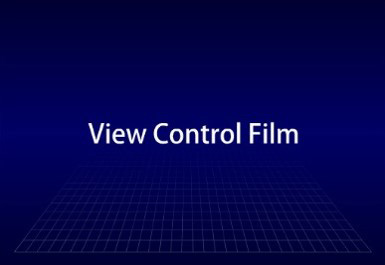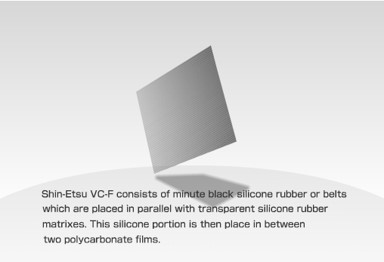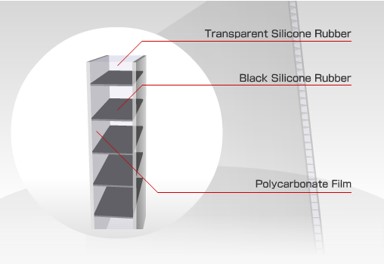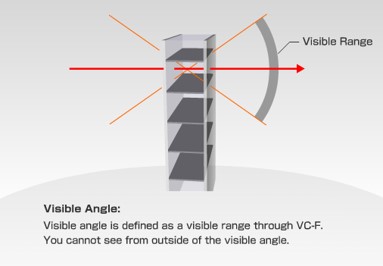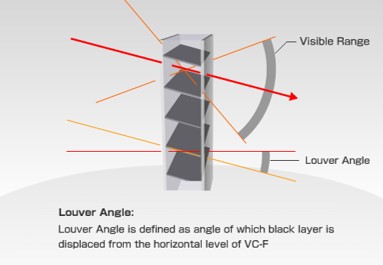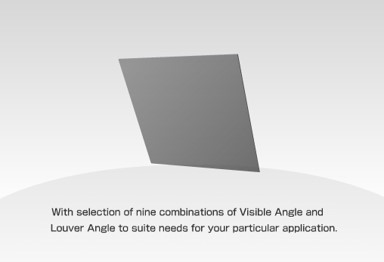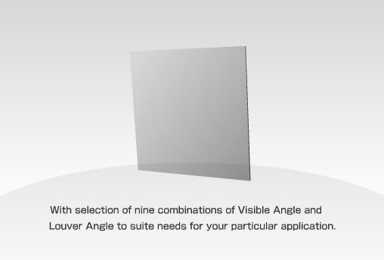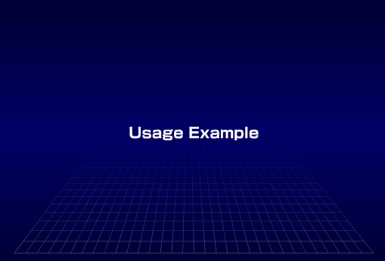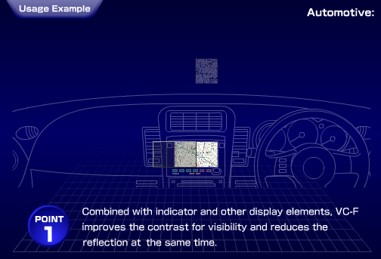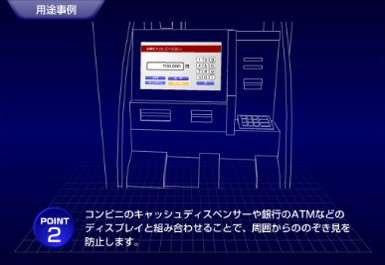This film is made of silicone rubber and effective for controlling the field of view and the optical path, such as preventing the reflection, peeping and glare of various displays including in-vehicle equipment, and cutting unnecessary light from the light source and the stray light from outside for the application such as the optical sensor unit and fingerprint authentication.
[Industrial field]
Automobile, PC, Electronics Appliances, Communication Equipment, Sensors
Since most part of film uses silicone rubber, it has excellent environmental resistance characteristics. Also, due with the unique manufacturing method, there is a high degree of freedom in design, especially customizing various applications with field of view ranges or view angles.
[Applications]
- In-vehicle indicator, CID, illumination (prevention of reflection)
- ATM, liquid crystal display (prevention of peeking / prevention of light leakage)
- Sensors, fingerprint authentication (optical path control)
- The louver layer material is made of silicone rubber, and has excellent environmental characteristics such as heat and cold resistance, humidity resistance, and flexibility.
- The silicone rubber has good color adsorption, so that the light-shielding layer has high concealing power and less light leakage at the light-shielding position.
- The available field of view range is 20 to 120°, however it is possible to customize to specific field of view between 20 to 120 deg.
- “N-VCF (narrow field of view range type)” (link to individual site)
- ”W-VCF (wide field of view range type)” (link to individual site)
- By tilting the light-shielding layer, it is possible to change a louver angle where the viewing angle is shifted from the front.
- Various coating films such as Anti- Glare and hard coat are also available.
- Available with transparent adhesive tapes for bonding.
- This film can prevent the reflection on the widow shield glass surface at night by placing VCF to inside of vehicle indicator or CID.
- By placing this film on a LCD display, it works as privacy film and prevent glare to the surroundings.
- This film will cut unnecessary light from the light source and the stray light from outside for the application such as the optical sensor unit and fingerprint authentication unit.
- The louver layer film, which has a transparent silicone rubber and a highly concealing black silicone rubber that are alternately arranged, is sandwiched with two transparent resin film top and bottom.
- By stacking two louver films orthogonally, it is possible to block in four directions and limit the field of view range to the central part (cross louver specification).
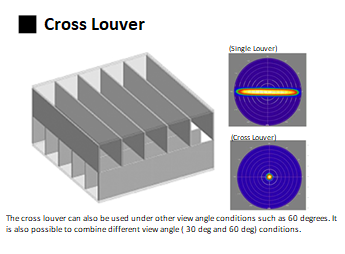
Outline
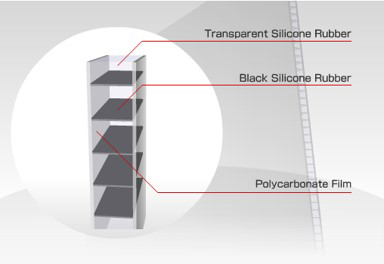
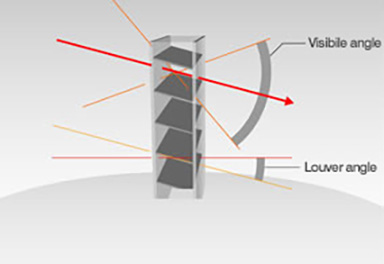
- Field of view range (view angle, field of view ): The range or angle where the display can be seen through the VCF .
- Louver angle: The angle between the black shading layer and the horizontal datum line.
Environmental resistance characteristic
|
|||||||||||||||||||||||||||||||||||||||||
Change of Chromaticity (⊿⊿x(⊿⊿y))=『Chromaticity of After test (⊿x'(⊿y'))』‐『Before test (⊿x(⊿y))』
Surface film :Polycarbonate film 0.2mm thickness
Light resistance test characteristic
- Test equipment : Xenon arc Weather-O-Meter(Atlas Ci4000)
- Irradiation method : Continuous irradiation
- Irradiance : 0.55W/m2(340nm)
- Black panel temperature : 89℃/Humidity :50%
- Exposure value : 800KJ(404hours)
Field of view range Characteristic


VCF Standard spec LIST
|
Note
Every item or numerical value indicated herein is measured by Shine-Etsu and out of guarantee.
The quality of the connector, which bas been already assmblied, is out of guarantee.
Please make sure to see about the purpose/conditions of use and practice your own test.
Industrial ownership like patent doesn't guarantee the usage of the connector.
Technical information
Shin-Etsu view control film is used to the mobile phone as "veil view" or as anti-reflection toward windshield and so on. By the use of silicone rubber, it is superior in environmental resistance, optical characteristic or flexibility and highly effective.
*"VCF" is a registered trademark of Shin-Etsu Polymer Co., Ltd.
